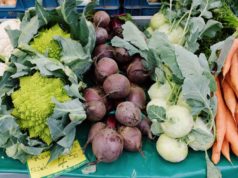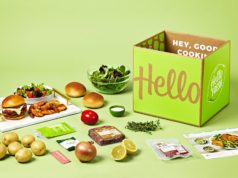These days, you don’t have to look hard to find someone who doesn’t consume gluten. Are these folks onto something? Are there actual benefits to going gluten-free, or is it all a big hoax meant to help food manufacturers sell more products?
If you’ve been considering going gluten-free, keep reading to learn more about the benefits of this diet and how you can make the process as simple as possible.
What is Gluten?
Before you slash all gluten from your diet, it’s important to get a firm grasp on what gluten actually is.
Gluten is the name for a group of hundreds of proteins that are found in grains like wheat, rye, and barley. It is found in the endosperm of these grains, and its purpose is to nourish plant embryos during the germination process.
There are two main classes of proteins in gluten: gliadin and glutenin. Gliadin gives dough the ability to rise, and glutenin is responsible for the dough’s elasticity. Some people confuse going gluten-free with going grain-free, but they’re definitely the same thing. There are many grains that do not contain gluten, including millet, rice, amaranth, quinoa, corn, sorghum, and buckwheat. Oats are also a gluten-free grain, but they are often contaminated when they’re processed.
Benefits of Going Gluten-Free
For certain people, there are a number of benefits that come with going gluten-free, including the following:
- Improved digestive symptoms (bloating, diarrhea, and gas)
- Improved energy and mental clarity
- Improved communication and social behaviors in people with autism
- Reduced inflammation throughout the body
- Weight loss
- Decreased intestinal permeability (leaky gut)
Does Everyone Need to Give Up Gluten?
In short, no. There are varying degrees of gluten sensitivity (more on that in a minute), and not everybody needs to cut out gluten altogether.
The most well-known form of intolerance to gluten is known as celiac disease. This is a condition that affects one in 141 people throughout the U.S. Celiac disease is an autoimmune disease. When people with celiac disease eat gluten, it triggers an immune response in their body that causes damage to their intestines and prevents them from absorbing nutrients.
People with celiac disease need to be very strict about avoiding gluten-containing foods, as well as utensils and dishes that have been contaminated with gluten. People who have irritable bowel syndrome (IBS), a gastrointestinal disorder, can also benefit from avoiding gluten. The reason for this is that gluten-containing grains are easily fermented. This can make bloating, diarrhea, and cramping worse for people who already suffer from IBS.
Some people also suffer from a condition known as non-celiac gluten sensitivity. These people do not have celiac disease but still experience many of the same symptoms — including diarrhea, fatigue, and joint pain — when they consume gluten. Although they experience similar symptoms, people with non-celiac gluten sensitivity do not experience intestinal damage when they consume gluten.
Non-celiac gluten sensitivity seems to affect women and young to middle-aged adults most often.
How to Tell if You’re Gluten Intolerant
There are a few different ways to determine whether or not you have celiac disease or are gluten intolerant.
If you’re currently consuming gluten, a blood test can be administered to check for markers of the disease. Your physician can also perform a biopsy of the small intestine to check for the damage that is characteristic of celiac disease.
You can also check for a gluten intolerance by eliminating gluten-containing foods from your diet. A 30-day elimination, followed by a reintroduction, can help you check to see if gluten is causing your symptoms.
Tips for Going Gluten-Free
If you’ve decided that a gluten-free diet is right for you, you might be feeling a little daunted. The standard American diet is rich in wheat and gluten-containing grains, and it can be hard to know where to start.
These tips can help make the process a little easier and less intimidating:
1. Get Familiar with What You Need to Avoid
One of the first things to do when you get ready to cut out gluten is to get familiar with all the foods that you need to avoid.
Wheat, barley, and rye are the most well-known foods that contain gluten. You’ll also need to avoid the following foods, which usually contain gluten or have a high risk of cross-contamination:
- Bran
- Orzo pasta
- Panko
- Udon
- Faro
- Couscous
- Kamut
- Spelt
- Seitan
- Semolina
- Durum
- Malt
- Malt vinegar
- Matzo
- Beer
- Ramen noodles
- Most sauces, including soy sauce (check the label to be sure)
- Instant gravies and soups
- Most types of chocolate (check your labels)
2. Focus on What You Can Eat
As you can see, there’s a pretty long list of foods that are off-limits when you’re going gluten-free. But, dwelling on everything that you can’t eat is most likely going to make you feel resentful and decrease your chances of sticking to this diet.
Instead, focus on all the foods that you still can eat. There are tons of grains that are still available to you (including rice, corn, and quinoa). Make those staples in your diet, and, soon, you won’t even miss your favorite gluten-containing foods.
3. Meal Plan
When you have to switch up your diet, one of the best things you can do is to sit down for a few minutes and figure out a weekly meal plan. This will help you identify new, gluten-free recipes and will take the guesswork out of cooking to fit your new lifestyle.
Meal planning can also help you save money. Many gluten-free foods can be expensive, and making a meal plan will help you avoid breaking the bank with your gluten-free diet.
4. Find Gluten-Free Takeout Options
No matter how dedicated you are to your meal plan, there are going to be times when you simply are too tired to cook. When it comes to finding takeout, it can be hard to find options that don’t contain gluten.
Take some time to identify some compliant choices so that, when you are ready to order, you don’t have to frantically scour the menu for something gluten-free. Many items are Indian restaurants are gluten-free, and you can easily make a burger gluten-free by asking for the bun to be left off.
Some pizza places also offer gluten-free options these days, and you can make many Asian dishes gluten free by ordering meat that isn’t breaded and asking for soy sauce to be left off (it almost always contains gluten).
5. Eat More Real Food
When you first go gluten-free, it’s easy to get sucked into the trap of thinking you need to buy tons of specialty gluten-free foods (gluten-free bread, cookies, crackers, etc.). These foods are fun on occasion, but, if you really want to save money, you’re better off opting for more whole foods instead.
This means eating more meat, fruit, and vegetables, along with gluten-free grains like rice and quinoa. You’ll also most likely find that you feel better when you’re eating this way and aren’t relying too much on specialty foods, which are often full of unnecessary sugar and other chemicals.
Final Thoughts
Do you think going gluten-free could be good for you? If so, these guidelines will help make the process of switching to a gluten-free diet much easier. Keep them in mind, and you’ll be enjoying a gluten-free kitchen before you know it!











